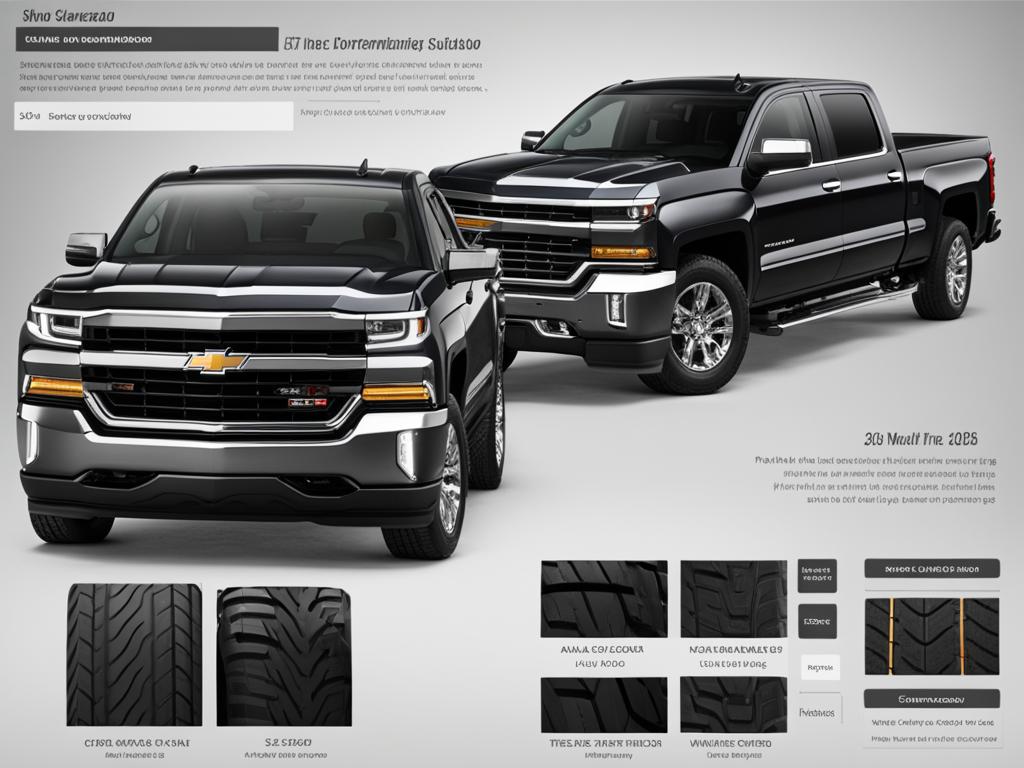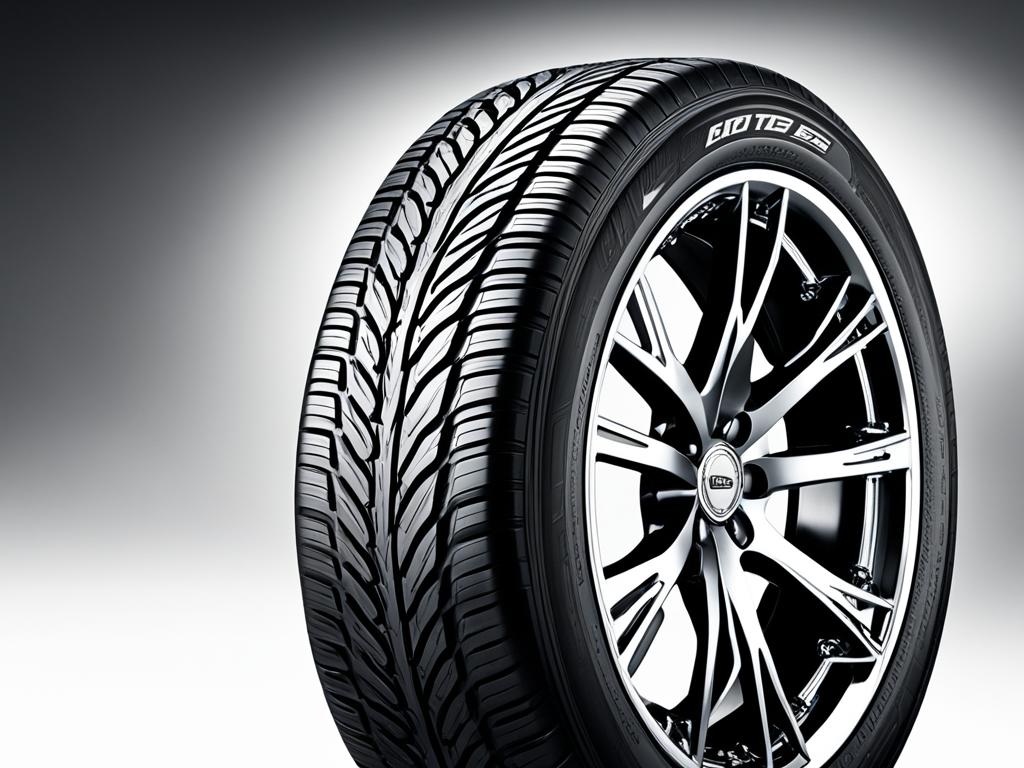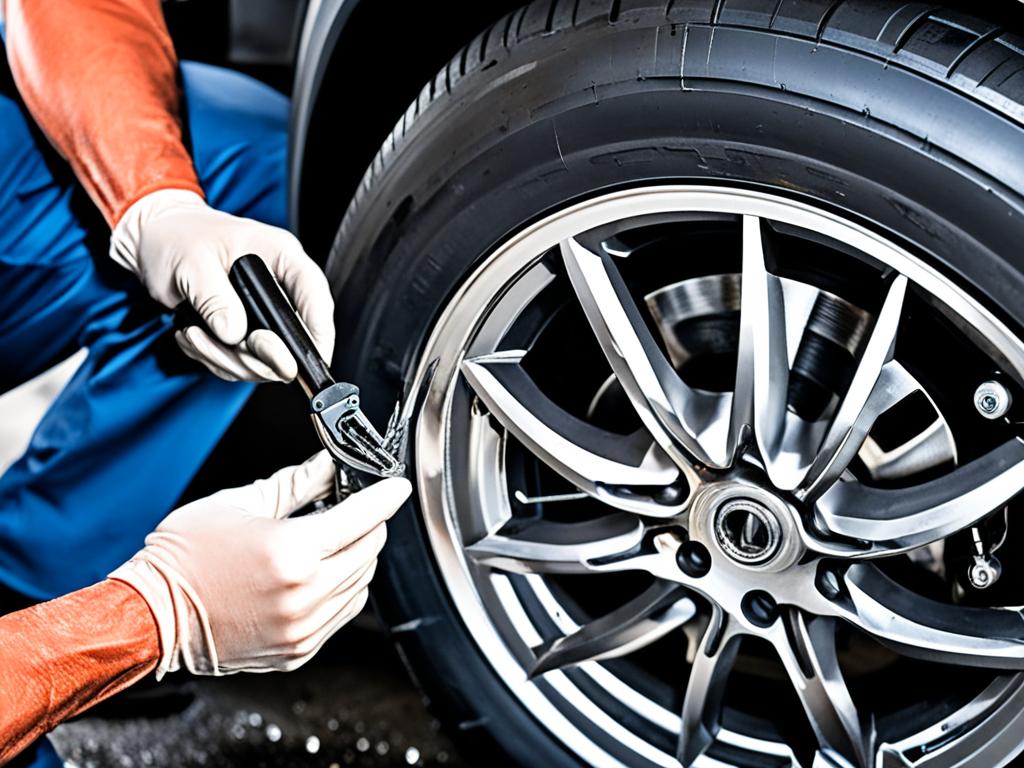When it comes to maximizing fuel economy, many factors come into play, and one often overlooked aspect is tire size. The right tire size can significantly impact the fuel efficiency of your vehicle, helping you save money at the pump while reducing your carbon footprint.
Tires play an essential role in the fuel economy of a vehicle as they directly affect rolling resistance. Modern tire designs and materials have made it possible to reduce rolling resistance, resulting in improved fuel efficiency. By choosing the best tire size for fuel economy, you can optimize your mileage and enjoy long-term savings.
One important consideration is the tread depth. Shallow treads are generally more fuel-efficient because they reduce friction with the road surface. Additionally, maintaining proper tire inflation is crucial as underinflated tires increase resistance and fuel consumption, while overinflated tires affect grip and handling.
Choosing the right tire size for fuel efficiency involves finding a balance between the weight and rolling resistance of the tires. While larger tires may decrease fuel economy due to their weight, smaller tires can improve efficiency, especially in stop-start traffic. Customizing wheels with lighter alloy options can also contribute to better fuel efficiency by reducing the vehicle’s weight and resistance.
Lear more about Tire size calculator
Regular maintenance and proper alignment are essential for ensuring optimal fuel economy. By rotating and checking for excessive wear on your tires, you can prolong their lifespan and maintain their fuel-efficient properties. Overall, paying attention to your tire size and following maintenance guidelines can have a significant impact on your vehicle’s fuel efficiency.
Key Takeaways:
- Choosing the right tire size can have a significant impact on fuel economy.
- Tires with shallow treads are generally more fuel-efficient due to reduced friction.
- Proper tire inflation is crucial for maximizing fuel efficiency.
- Customizing wheels with lighter alloy options can contribute to improved fuel economy.
- Regular tire maintenance and alignment are essential for optimizing fuel efficiency.
Factors Affecting Fuel Efficiency and Tire Selection
Table of Contents
ToggleWhen it comes to improving fuel efficiency, selecting the right tire size is crucial. The size of your tires directly impacts fuel economy, with larger tires generally reducing fuel efficiency, while smaller ones can increase it.
The weight of larger tires contributes to higher rolling resistance, which means it requires more effort to get them rolling. This results in lower fuel economy, especially in stop-start traffic situations. On the other hand, larger tires can improve fuel efficiency at high speeds. As the engine works harder to make a smaller wheel cover the same distance, fuel consumption is reduced.
To optimize fuel efficiency, it is recommended to consider both tire size and weight. If you opt for larger wheels, compensating by reducing the height of the sidewall can help maintain fuel economy.
Tire inflation also plays a significant role. Underinflated tires can increase fuel consumption by 10% or more. On the other hand, overinflated tires can impact grip, performance, and tire lifespan. Therefore, it is essential to maintain proper tire inflation for fuel efficiency.
Another consideration is nitrogen-filled tires. Switching to nitrogen can help maintain stable tire pressure despite temperature changes, contributing to better fuel efficiency.
Proper tire alignment and regular maintenance are also vital for improving fuel economy. Checking and replacing worn components, such as suspension systems and steering components, can help optimize fuel efficiency.
Factors Affecting Fuel Efficiency and Tire Selection Summary:
- Tire size has a direct impact on fuel economy.
- Larger tires tend to decrease fuel efficiency, while smaller ones can increase it.
- Weight affects rolling resistance and fuel economy.
- Consider weight when selecting tire size, compensating for larger wheels with a reduced sidewall height.
- Proper tire inflation is crucial for fuel efficiency.
- Underinflated tires increase fuel consumption, while overinflated tires affect grip and performance.
- Nitrogen-filled tires help maintain stable tire pressure and improve fuel efficiency.
- Proper tire alignment and regular maintenance contribute to better fuel economy.
Learn more about best all season tire for subaru outback

Top Fuel-Efficient Tire Options
When it comes to improving fuel efficiency and maximizing mileage, choosing the right tire size is crucial. Optimal tire size for better fuel economy can significantly impact gas mileage and overall fuel efficiency. Here are some top fuel-efficient tire options to consider:
1. Michelin Energy Saver A/S: This high-quality tire is designed to reduce rolling resistance while improving fuel efficiency. It offers a balance between performance and safety, ensuring a smooth and eco-friendly driving experience.
2. Bridgestone Ecopia Ep422 Plus: Offering a smooth ride and fuel-efficient performance, these tires strike a perfect balance between eco-conscious driving and quality. They deliver improved fuel efficiency without compromising on comfort or handling.
3. Continental PureContact LS: These tires feature EcoPlus technology, which enhances fuel economy, handling, and braking in various road conditions. With these tires, you can enjoy improved fuel efficiency without compromising on safety or performance.
4. Goodyear Assurance Fuel Max: Designed specifically for maximum fuel economy, these tires reduce rolling resistance to enhance fuel efficiency. They offer a quiet and comfortable ride, making them ideal for both urban and long-distance driving.
Choosing fuel-efficient tires alone may not be enough. Regular tire maintenance, including rotation, alignment, and balancing, is essential for maximizing fuel efficiency and ensuring even tread wear. Additionally, consider lightening your vehicle’s load by removing unnecessary items and practicing smooth driving habits like avoiding abrupt stops and starts, maintaining a constant speed, and adhering to proper vehicle maintenance.
By choosing fuel-efficient tires and following these tips, you can significantly improve the fuel efficiency of your vehicle and contribute to a greener, more economical drive.
FAQ
What is the best tire size for fuel economy?
The best tire size for fuel economy depends on various factors such as driving conditions, vehicle type, and personal preferences. However, smaller tire sizes generally offer better fuel efficiency, particularly in stop-start traffic. It is essential to consider weight and properly inflate the tires for optimal fuel economy.
How does tire size impact fuel economy?
Tire size has a direct impact on fuel economy. Larger tires tend to decrease fuel efficiency due to their weight and higher rolling resistance. In contrast, smaller tires can improve fuel efficiency, especially in stop-start traffic. When selecting tire size, it is recommended to consider weight and compensate for larger wheel size by reducing the height of the sidewall.
Are there specific tire sizes that are more fuel-efficient?
While tire size alone does not determine fuel efficiency, certain tire models and sizes are designed with fuel economy in mind. Michelin Energy Saver A/S, Bridgestone Ecopia Ep422 Plus, Continental PureContact LS, and Goodyear Assurance Fuel Max are some examples of fuel-efficient tire options. These tires reduce rolling resistance and are designed to improve fuel efficiency without compromising performance and safety.
Does tire maintenance affect fuel economy?
Yes, tire maintenance plays a crucial role in fuel economy. Proper tire inflation is crucial, as underinflated tires increase resistance and fuel consumption. Overinflated tires can reduce grip and tire lifespan. Regular tire alignment, rotation, and checking for excessive wear contribute to better fuel efficiency. Additionally, using nitrogen-filled tires can help maintain stable tire pressure and further enhance fuel efficiency.
What other factors can impact fuel efficiency?
Apart from tire size, several factors can impact fuel efficiency. Proper vehicle maintenance, including checking and replacing air filters and other components, can contribute to better fuel economy. Lightening the vehicle’s load by removing unnecessary items and adopting good driving habits such as smooth driving, avoiding abrupt stops and starts, and maintaining a constant speed also help improve fuel efficiency.



